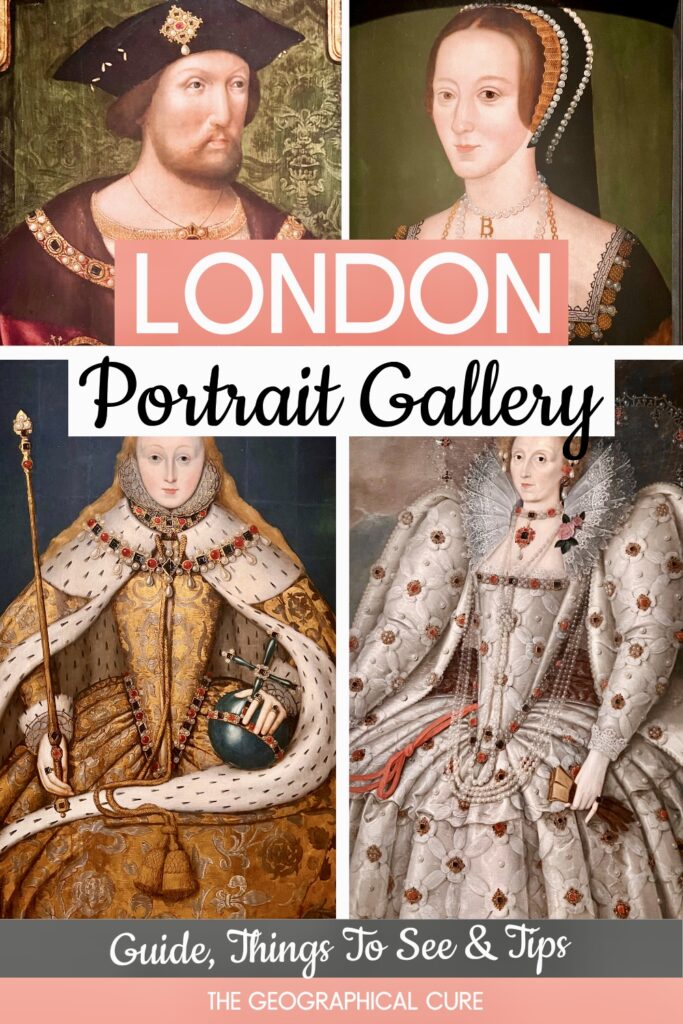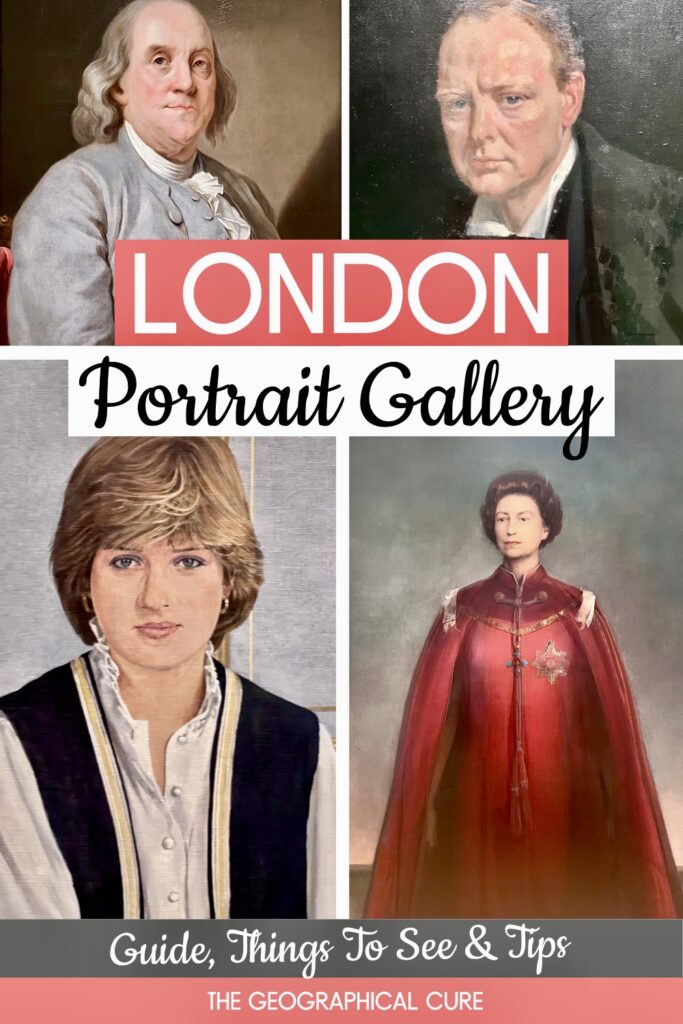Fancy a who’s who of English history? If so, head to the newly-reopened National Portrait Gallery in London.
I’ve been wanting to go back forever. But on each recent visit to London, it was closed for a massive $53 million top to bottom renovation. Finally, on my most recent trip, the museum was open and I could visit!
The National Portrait Gallery is home to portraits of renowned figures from British history, culture, and society.
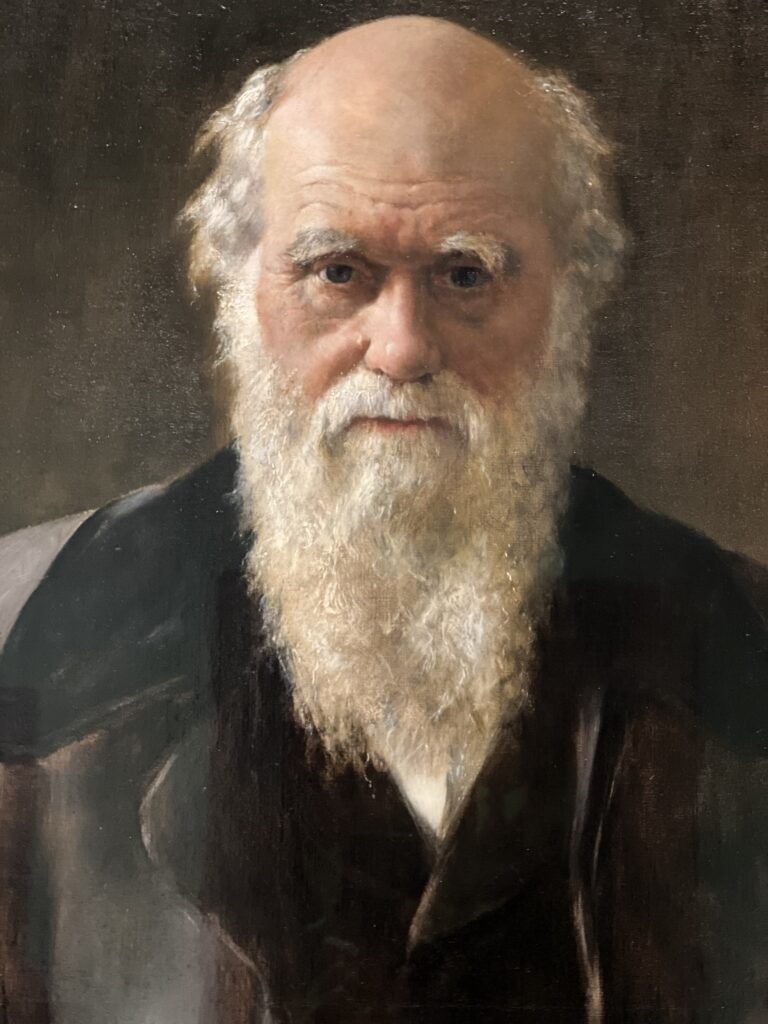
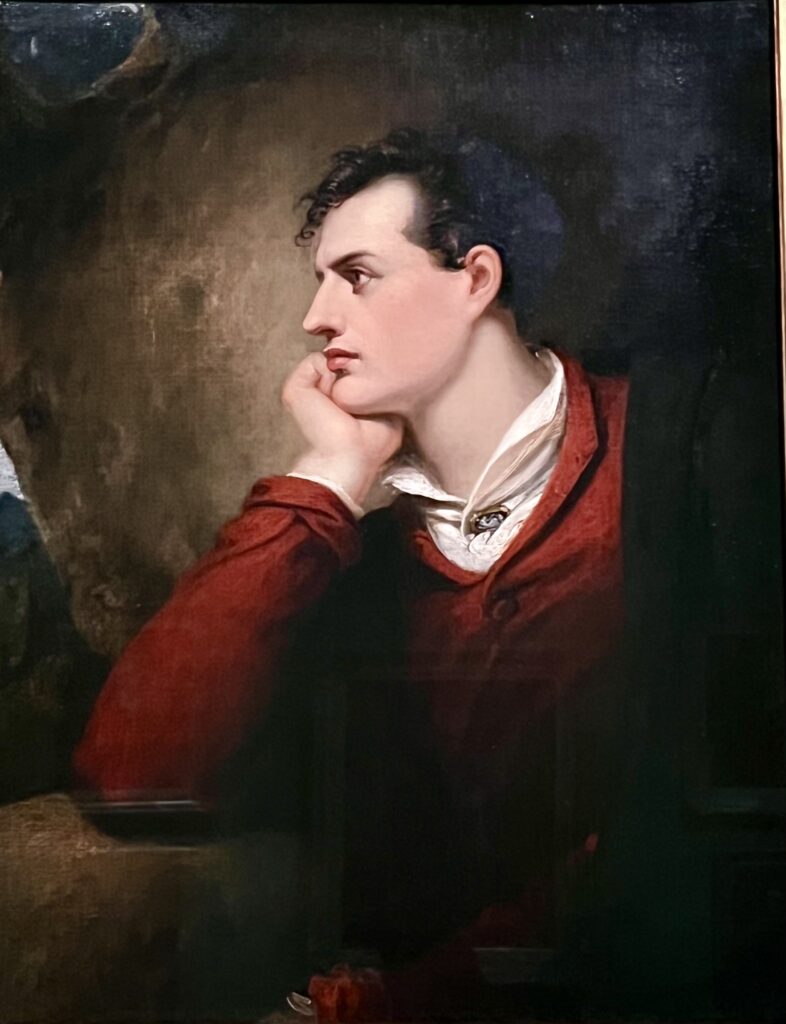
Naturally, that includes the queens and kings of England, including their offspring, consorts, and famous courtiers.
While not every monarch is in the collection, some (Henry VIII and Elizabeth I) are featured multiple times, which almost makes up for the incomplete showing.
But the collection is not just stiff-backed royals. It’s refreshingly unstuffy.
You’ll see musicians, clergy, philosophers, artists, writers, and contemporary celebrities. That includes the only known “from life” portrait of William Shakespeare.
In this NPG guide, I give you a rundown of the must see highlights and tips for visiting the museum.
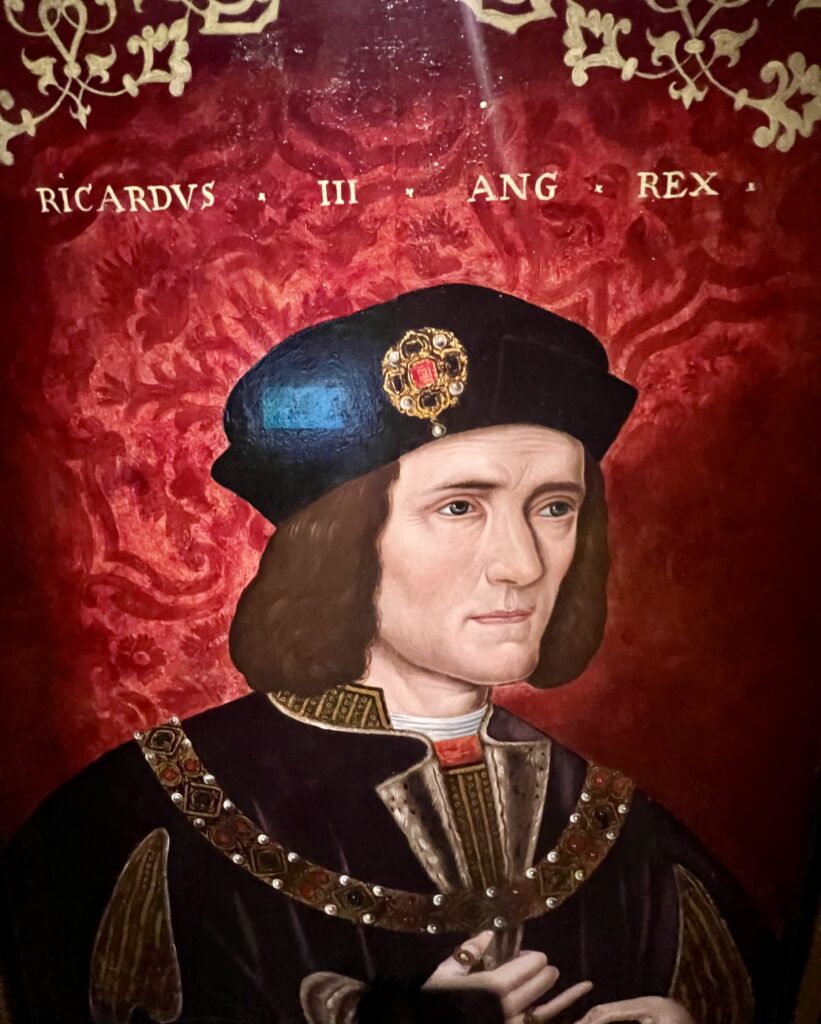
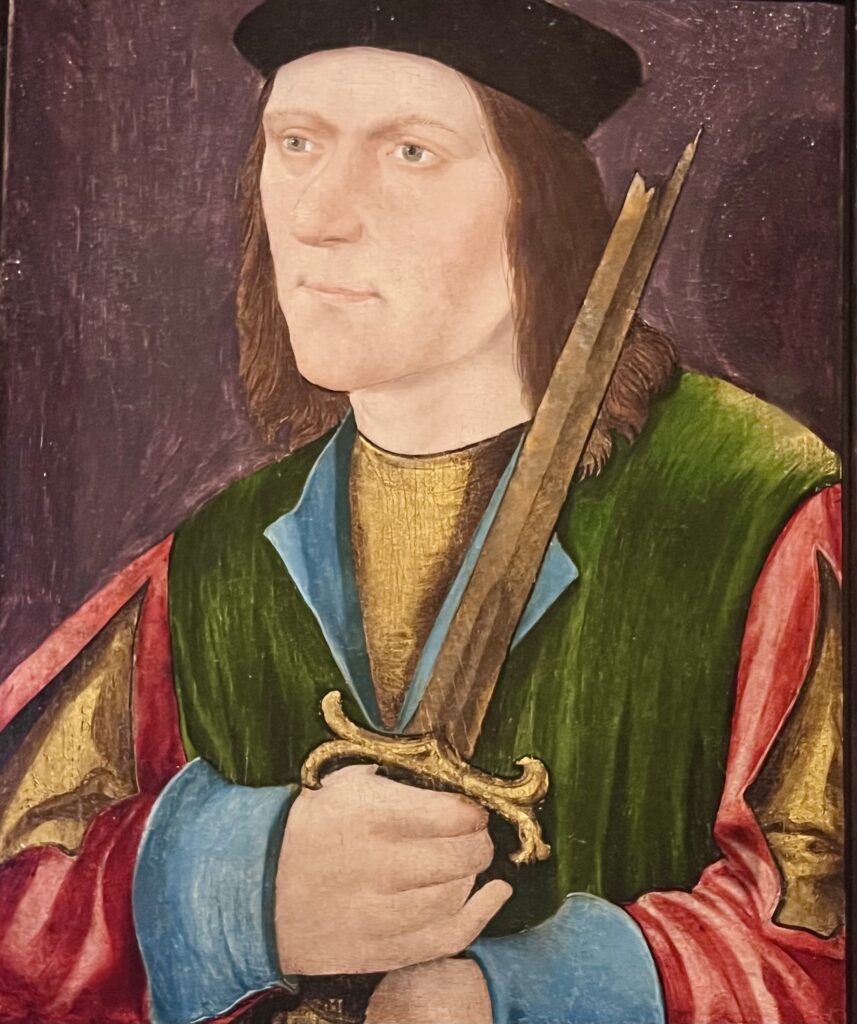
Guide To The National Portrait Gallery: What To See
You begin on 3rd floor and work your way down in chronological order. Take the long escalator on the left to begin. You start in Room 1, which is a doozy with a plethora of royal portraits.
Here’s what you can’t miss.
1. Portraits of Richard III
Richard III was the last Yorkist king of England. He’s known as the evil, ambitious king who murdered the sons of Edward IV, the two princes in the tower, and seized the crown. I think he’s unjustly accused and you can read about it here.
There is no surviving portrait of Richard III that was painted in his lifetime. They are all Tudor images that portray the king as a Disney ready caricature — a conniving, “poisonous bunch-backed toad” who ruthlessly murdered his innocent nephews.
The portrait on the left above was doctored to make Richard III look like a hunchback. On the right, he’s shown with a broken sword, a sign of illegitimacy, and lopsided shoulders.
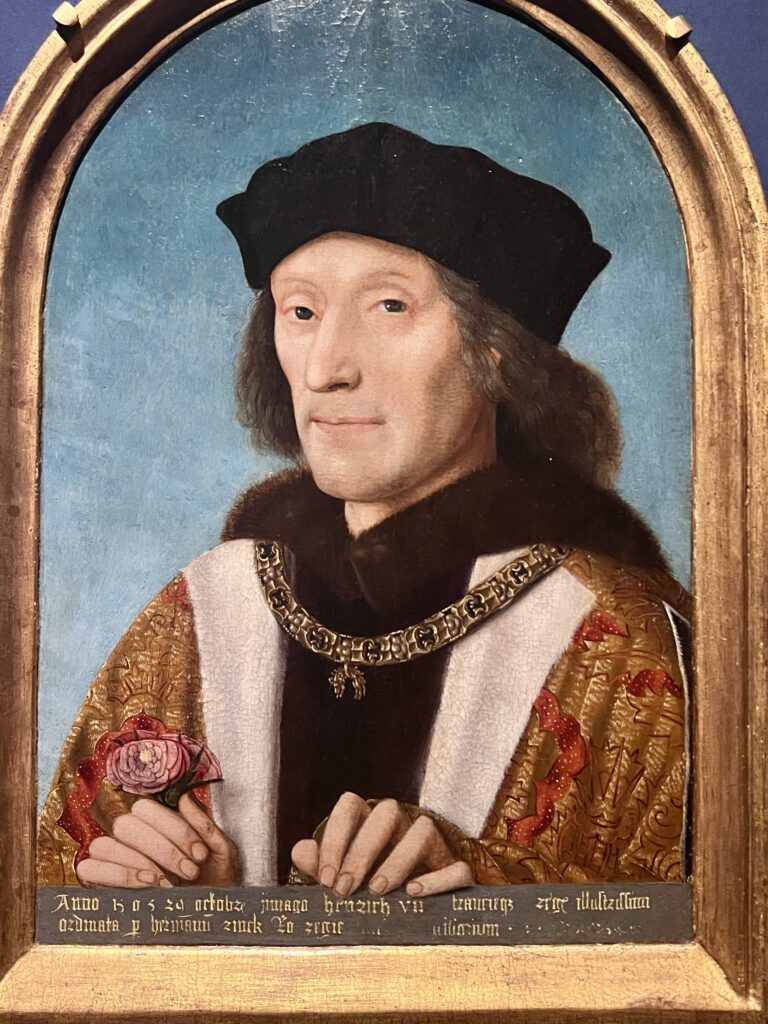
2. Portrait of Henry VII
Born in Wales, Henry Tudor had a tenuous claim to the throne through his mother, the scheming Margaret Beaufort. But, skillful and shrewd, Henry defeated Richard III in the Battle of Bosworth in 1485 and seized the crown.
To keep the peace, Henry married the daughter of Richard’s brother, Elizabeth of York.
This image of Henry, at age 48, is the earliest painted portrait in the museum’s collection, painted in 1505. It was created as part of negotiations when Henry was looking to remarry after Elizabeth’s death (he never did).
In the portrait, Henry leans out of the frame, holding the Tudor rose. I think it reflects his notoriously craft character. Look at those lopsided eyes!
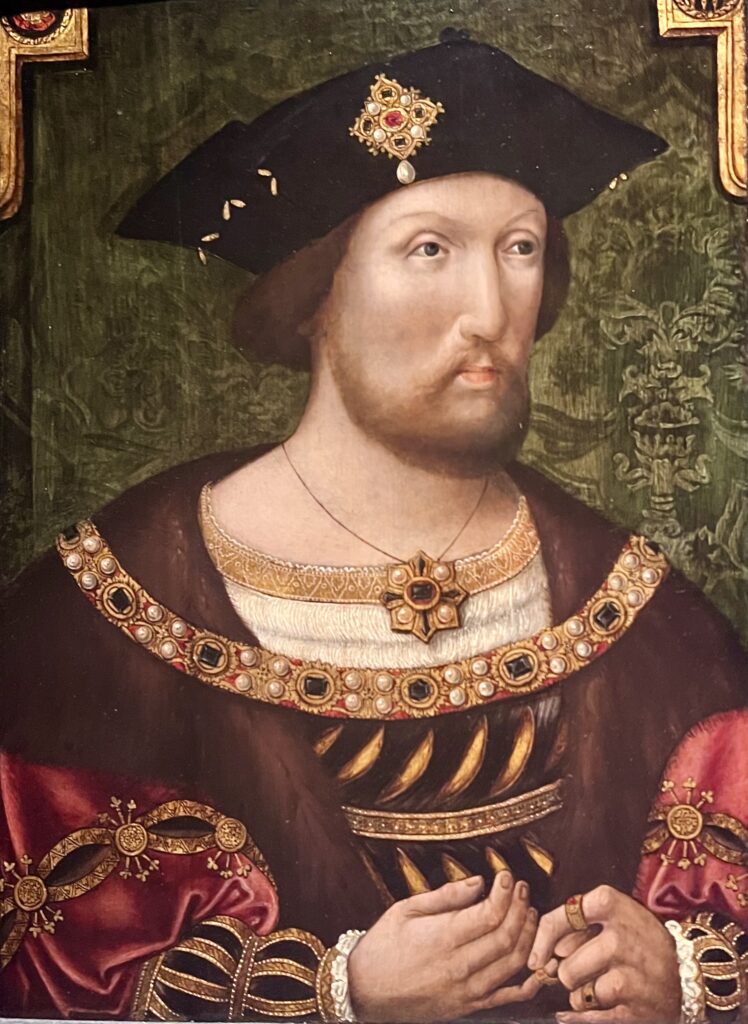
3. Holbein Portrait of Henry VIII
There are a raft of Tudor portraits in Room 1. At that time, standalone portraiture was a hugely popular art form. Over time, the scale and imagery of the portraits became quite ambitious.
This Tudor portrait is a study of England’s most famous (or infamous) king Henry VIII by Hans Holbein. The finished product was painted on a wall of Whitehall Palace, but is now destroyed. It was intended to overwhelm the viewer with Henry’s radiant majesty.
Holbein was a German artist considered “the King’s Painter.” He was in charge of executing Henry desire to be “not only a King to be obeyed, but an Idol to be worshipped.”
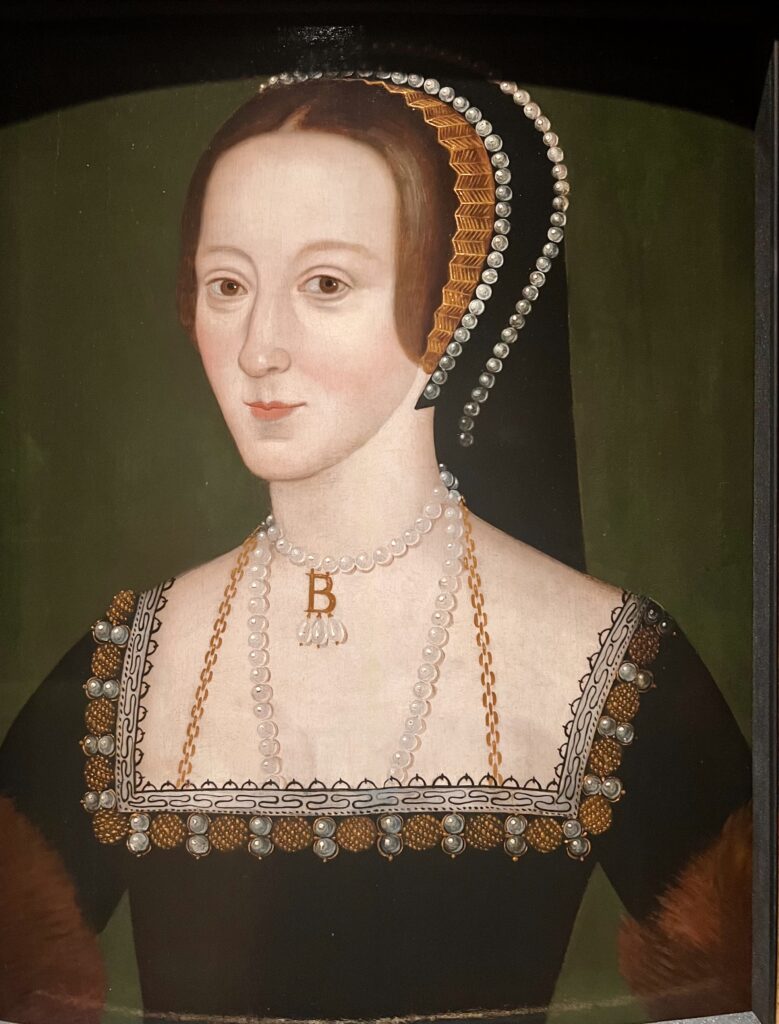
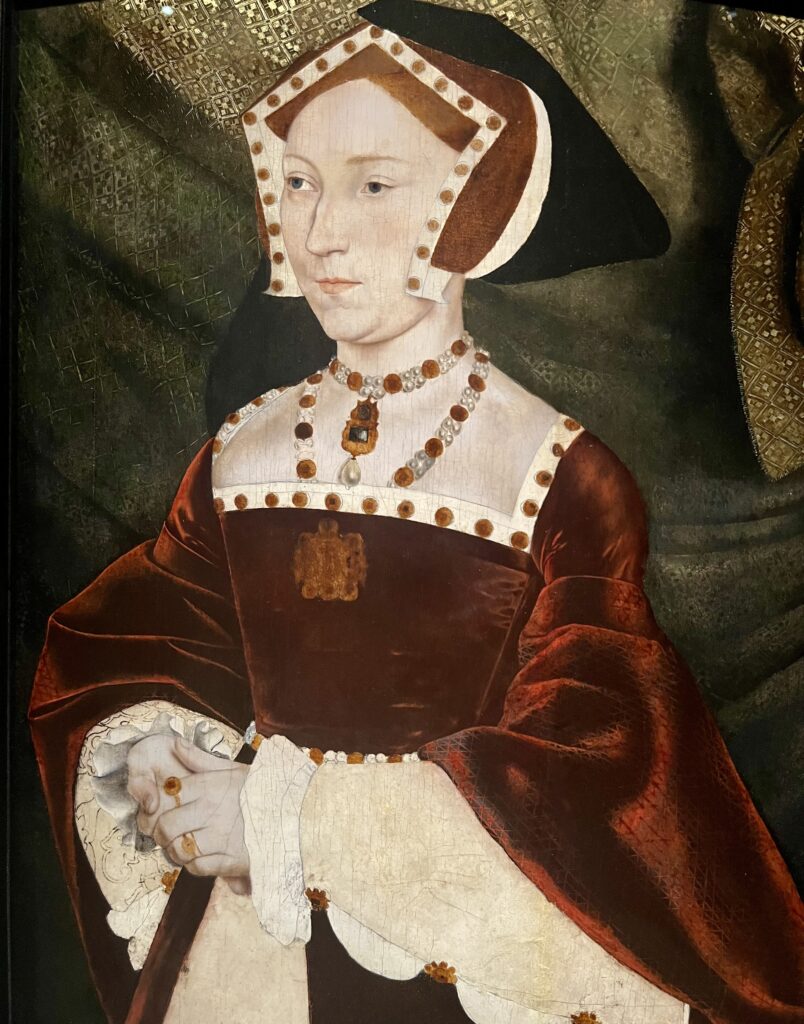
4. Six Queens: Henry VIII’s Wives
The museum has portraits of 4 of the 6 wives of Henry VII. You remember the saying, right? “Divorced, beheaded, died, divorced, beheaded, survived.”
There are portraits of Ann Boleyn, Jane Seymour, Ann of Cleves, and Katherine Paar. No known portrait of Katherine Howard exists.
Anne Boleyn is perhaps the most famous of his queens and is shown with her famous “B” necklace. Henry courted her for years while trying to obtain a divorce from his first wife, Katherine of Aragon. When that failed, he left the Catholic church, launched a new religion, and married Anne in secret.
After all that effort, it didn’t go well. Anne gave birth to a daughter, the future Queen Elizabeth I.
But she did not provide the requisite son and heir. Thomas Cromwell moved against her, raising suspicions that she committed adultery. She was found guilty of treason and executed at the Tower of London.
Henry next Married Jane Seymour, shown above to the right. She gave him a son, but died in childbirth. Her portrait by Hans Holbein is unfinished, abandoned at Holbein’s death from the plague.
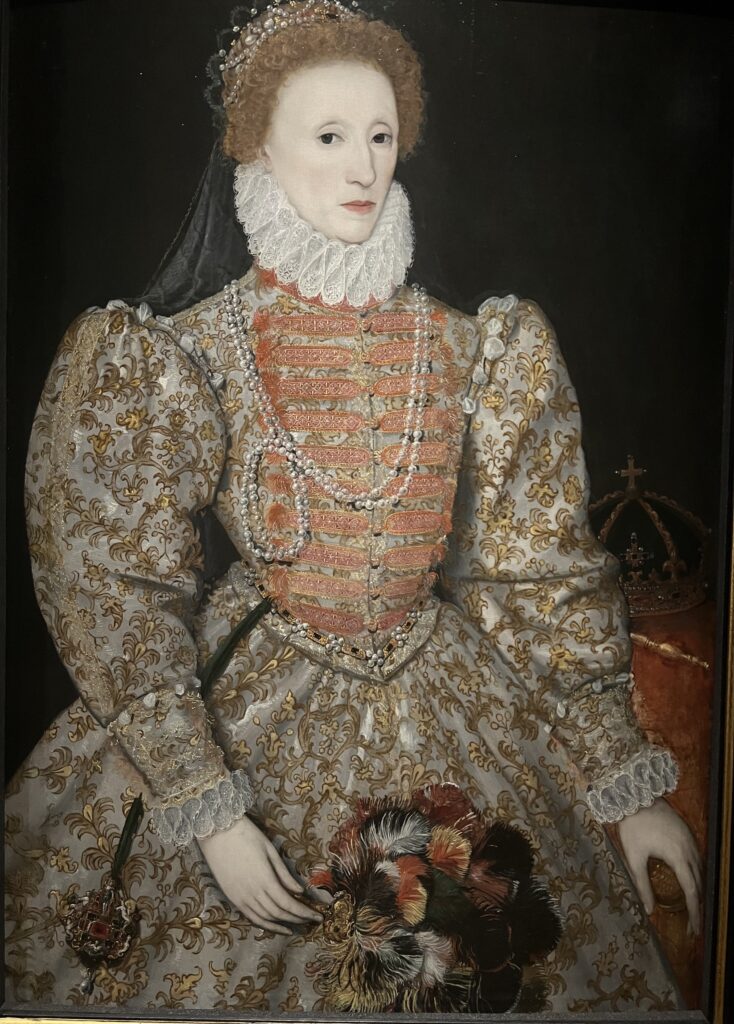
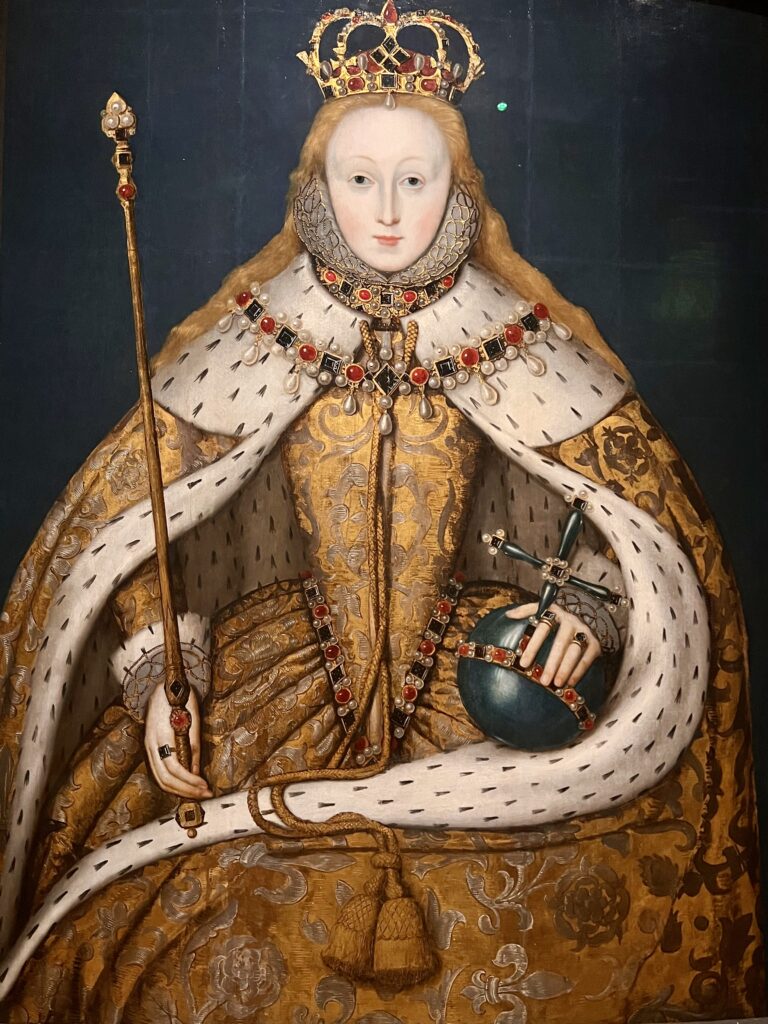
5. Portraits of Elizabeth I
Elizabeth was the first monarch seiously interested in the propagation of her image. Hundreds of portraits were made during her lifetime, though she sat for very few of them.
The one on the left shows Elizabeth in 1575. It’s one of her most striking portraits and shows a resemblance to her father Henry VIII.
In the stylized portrait on the right, you see a 25 year old Elizabeth who had just been crowned in 1559. She holds the orb and scepter to symbolize her personal authority as queen.
A fun fact? She wore hand-me-down coronation robes that her sister Mary had used five years earlier.
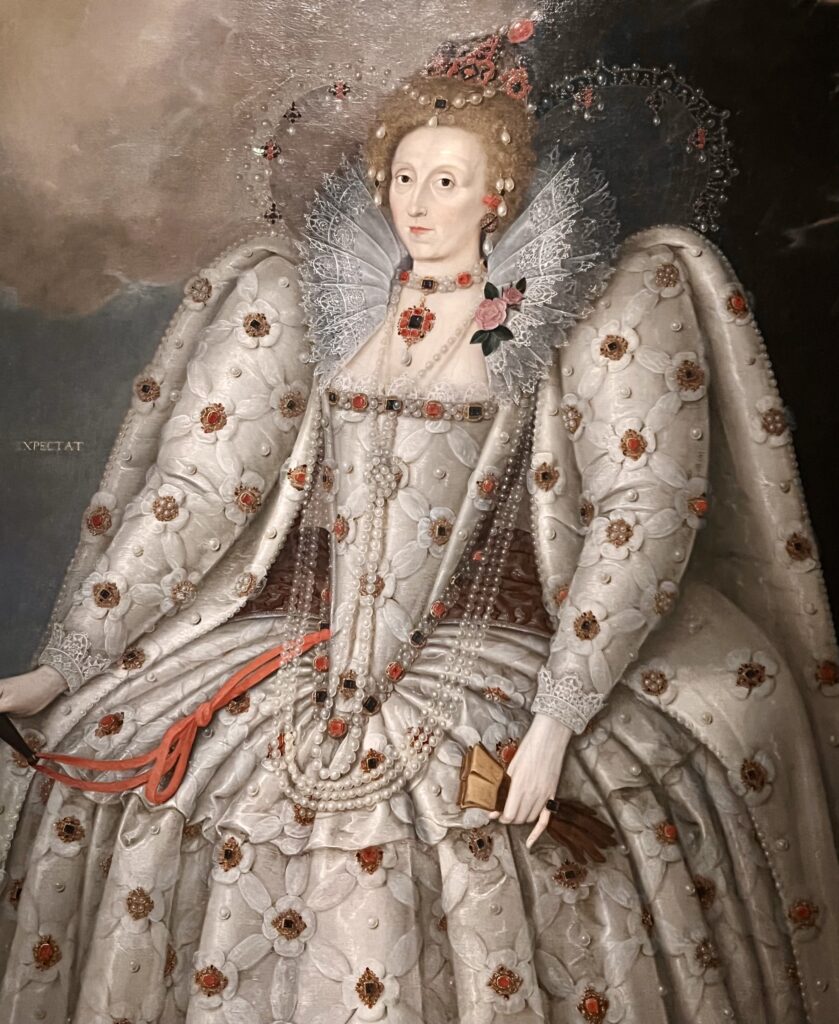
6. Ditchley Portrait
The Ditchley Portrait of Queen Elizabeth I is one of the most famous and iconic portraits of the English monarch. It was painted by the renowned English portrait artist Marcus Gheeraerts the Younger in the late 16th century, around 1592.
The portrait was commissioned as part of an elaborate performance staged by the courtier Henry Lee at his house in Ditchley.
The portrait depicts Queen Elizabeth as the “Virgin Queen.” She’s standing on a globe of the world, symbolizing that she is its grand empress.
She is shown in a powerful and regal pose, wearing a sumptuous white dress and jewelry that symbolized her wealth and status.
At the time, Elizabeth was 59 years old and childless. As she aged, her portraiture veered from reality and presented her as immoral being.
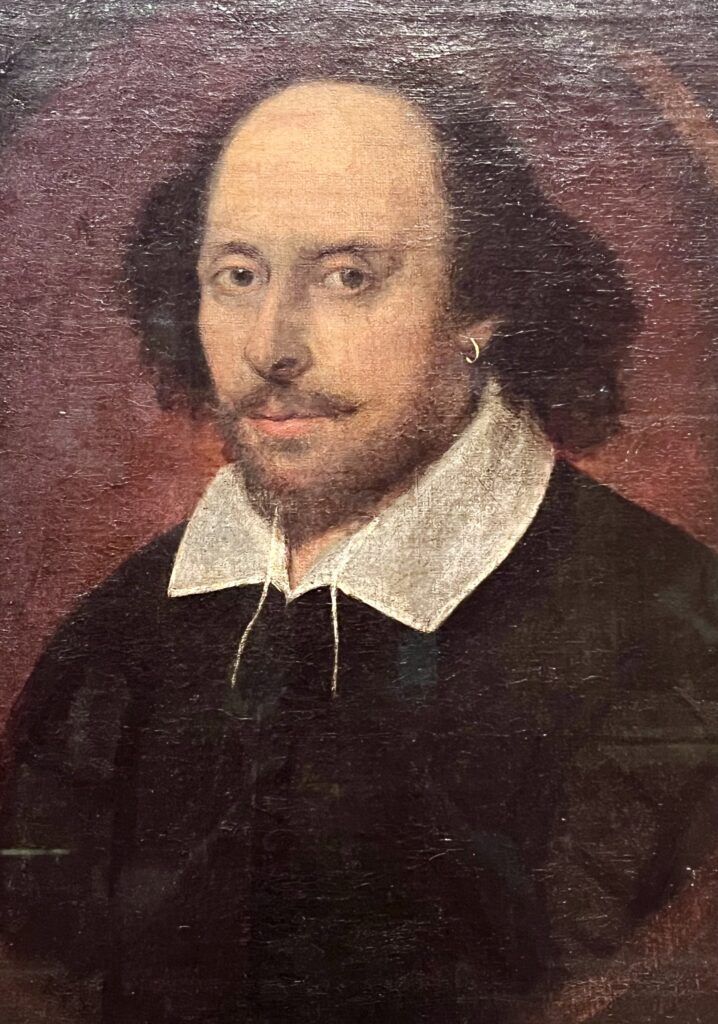
7. Chandos Portrait of William Shakespeare
The museum has several portraits of William Shakespeare, the renowned English playwright and poet.
The most famous one is the “Chandos portrait,” which is attributed to John Taylor and dates from the early 17th century. It’s named after the Duke of Chandos, who was once the owner of the painting.
This was the very first portrait acquired by the museum. And it’s believed to be the only image painted during the playwright’s lifetime, shortly before his death in 1616.
Shakespeare is depicted as a middle-aged man with a receding hairline and a distinctive Elizabethan-era ruffled collar.
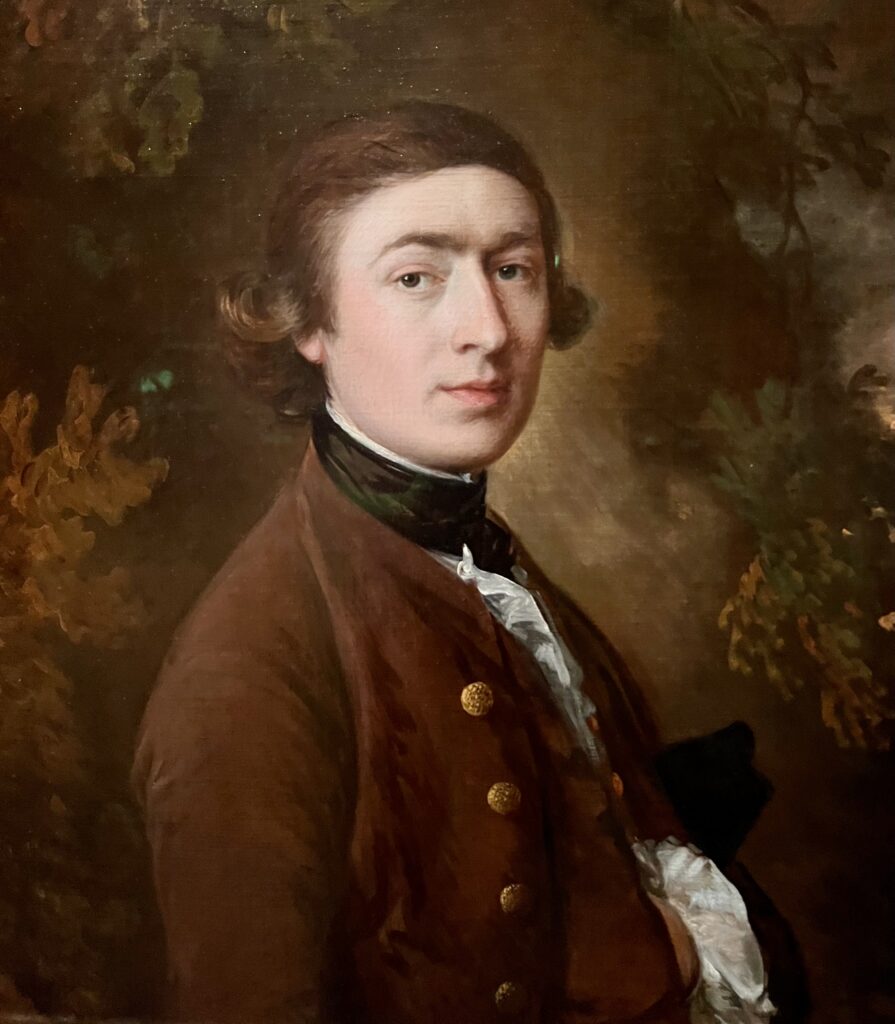
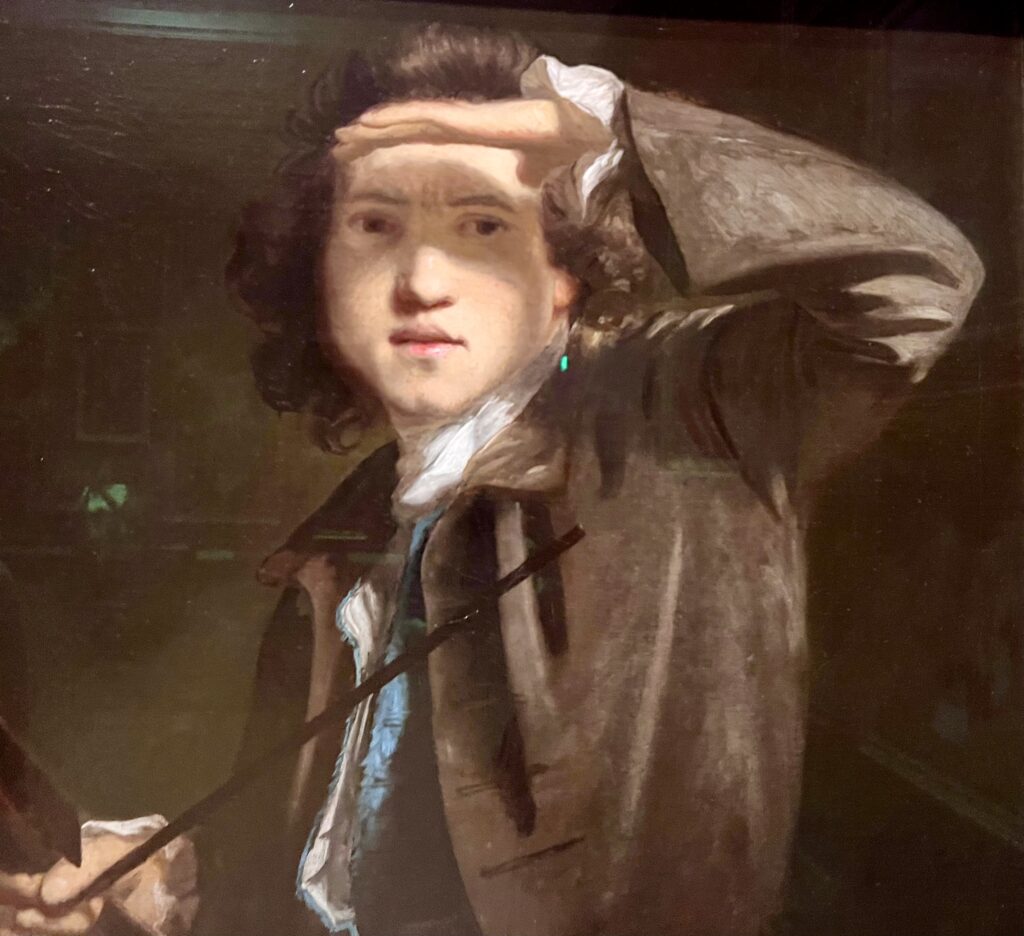
8. Famous Artist Self Portraits
Thomas Gainsborough and Joshua Reynolds were two of the most prominent portrait painters in 18th century England. And they were often considered rivals in the art world.
Gainsborough was known for his exquisite landscapes and ability to capture the natural grace of his sitters. Reynolds excelled in creating formal “grand manner” portraits that conveyed the dignity and character of his subjects.
Both men produced self portraits, so you can see what they looked like.
Reynolds’ effort is an inventive self-portrait, painted before he went off to study in Italy. Gainsborough’s self-portrait was painted when he moved to Bath, probably used to advertise his abilities.
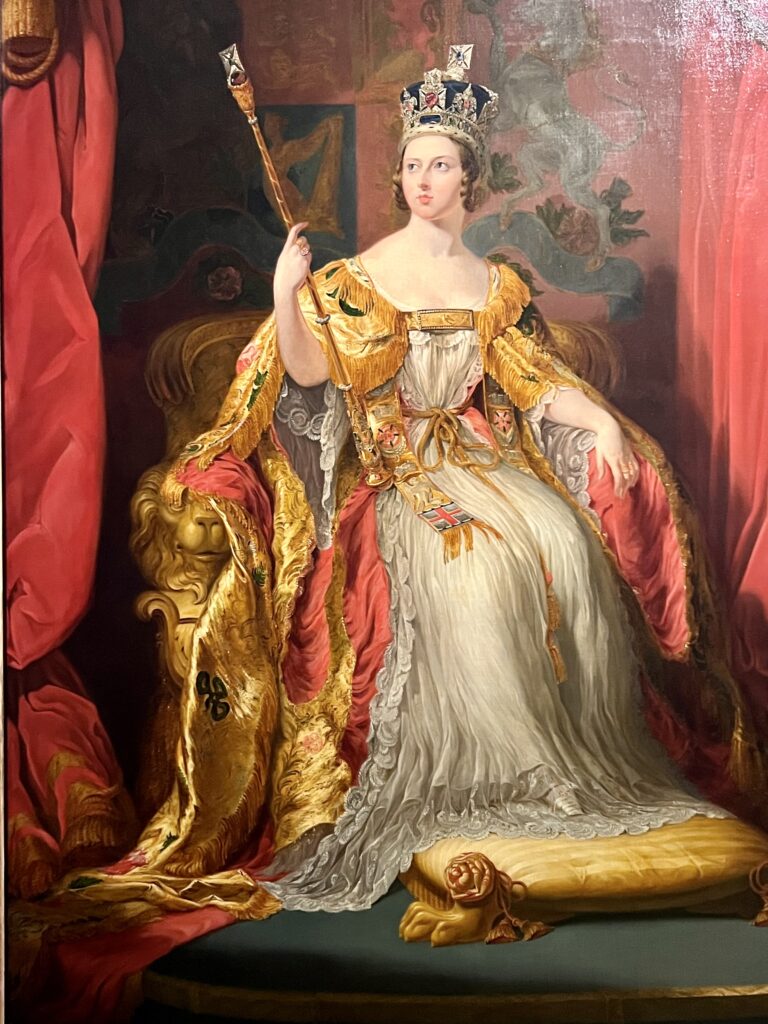
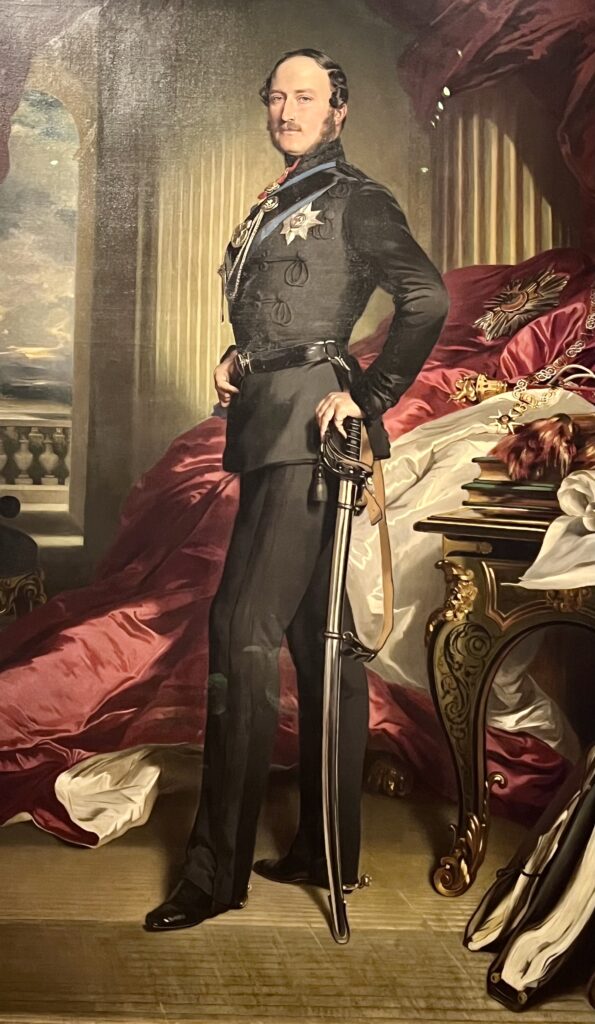
9. Queen Victoria & Prince Albert
Queen Victoria and Prince Albert, who reigned over the United Kingdom in the 19th century, were not only monarchs but also a devoted couple. Their marriage in 1840 was a love match that profoundly influenced Victorian society and the monarchy.
The painting on the left is a version of Victoria’s coronation portrait. She holds the symbols of authority. Her face is upturned and illuminated, suggesting a spirit of optimism.
Her husband Albert’s portrait is painted by Franz Xaver Winterhalter. He’s shown as a dashing prince, in the uniform of a colonel.
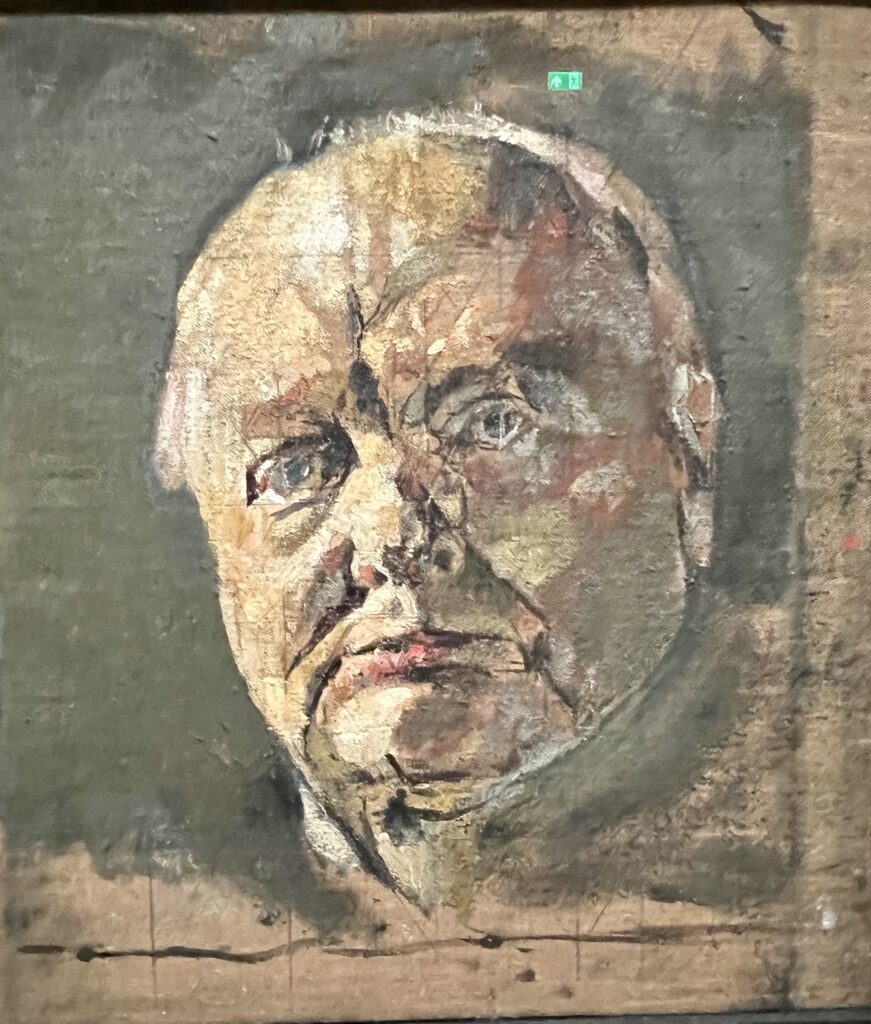
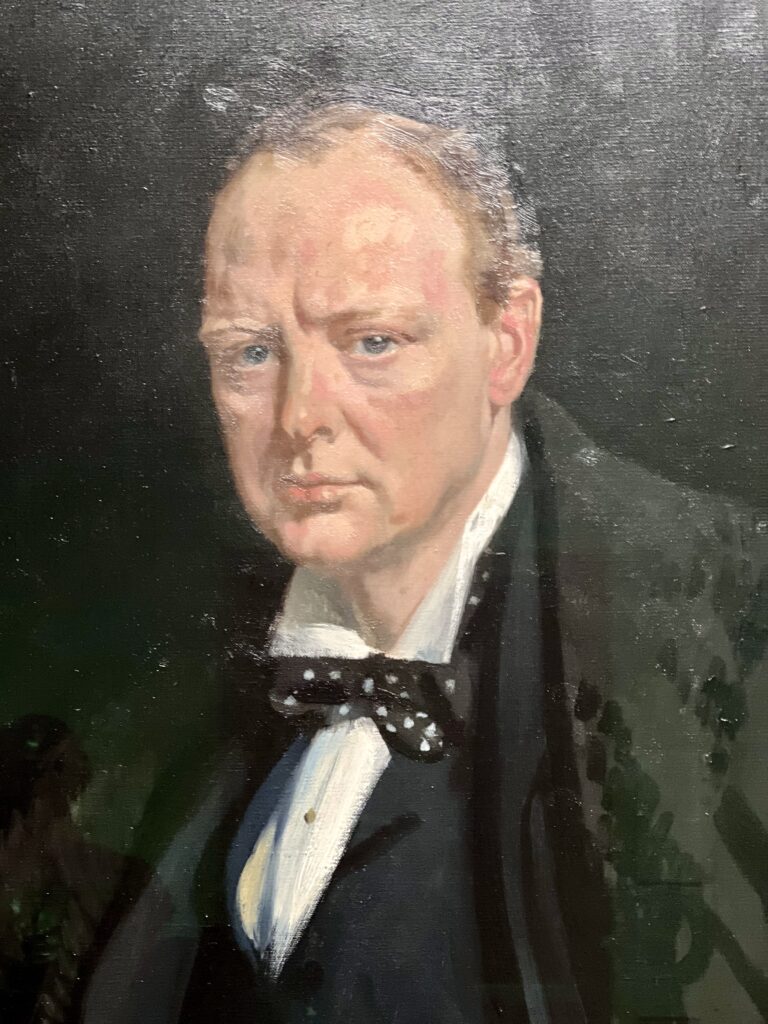
10. Sir Winston Churchill Portraits
The Churchill portrait on the right shows Churchill at a time of crisis during WWI, 25 years before his victory as Prime Minister during WWIII. It was when he had suffered a disastrous naval defeat.
Open portraits him as a “man of misery.” Churchill himself described his portrait as “not the picture of a man, but of a man’s soul.”
This portrait sketch on the left was marked by controversy when it was unveiled. But it remains a significant depiction of the wartime leader. It was commissioned to mark Vhurchill’s 80th birthday.
While posing, Churchill asked, “Will you portray me as a cherub or the bulldog?” Sutherland later said Churchill consistently showed him the bulldog.
Churchill hated the the completed portrait. And his wife Clementine destroyed it at his request.
READ: Guide to the Churchill War Rooms
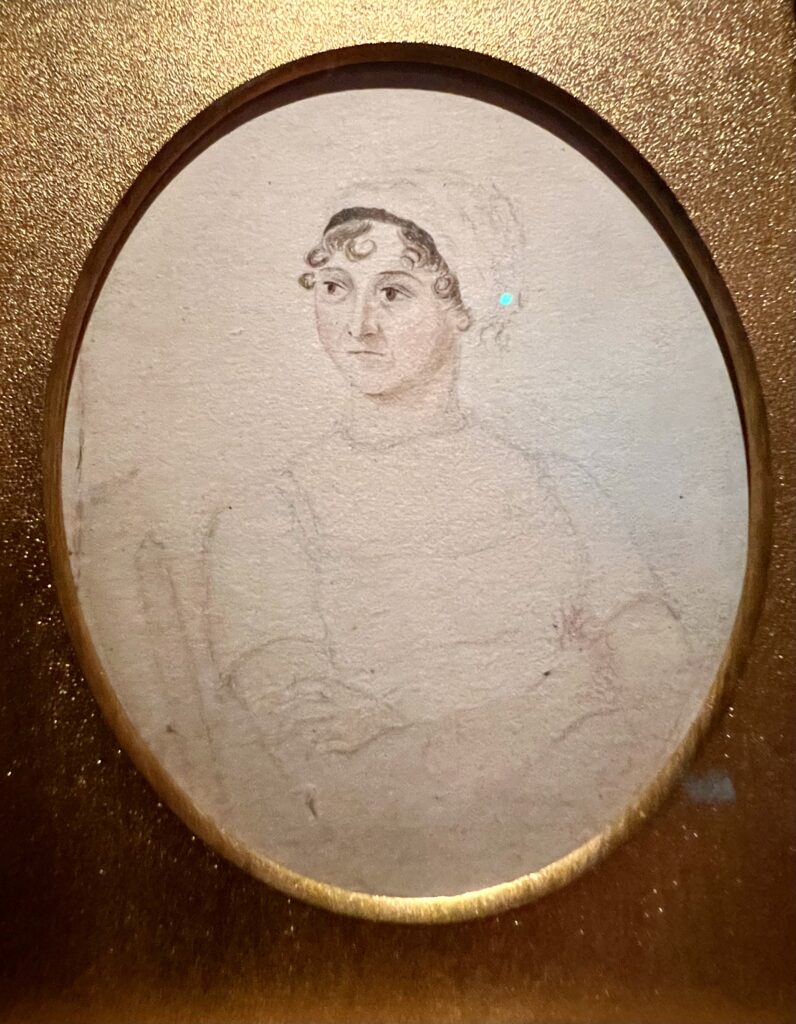
11. Portrait of Jane Austen
This is the only known lifetime portrait of the famous novelist Jane Austen. It’s a watercolor sketch believed to have been made by her sister Cassandra.
The sketch is believed to have been made in 1810, a few years before Austen’s death in 1817.
The portrait depicts Jane Austen in a relaxed and contemplative pose, looking to her right. She is shown wearing a simple bonnet and dress, reflecting the modest fashion of the time.
Because Cassandra Austen was a close family member, it’s often considered one of the most reliable representations of Jane Austen’s appearance.
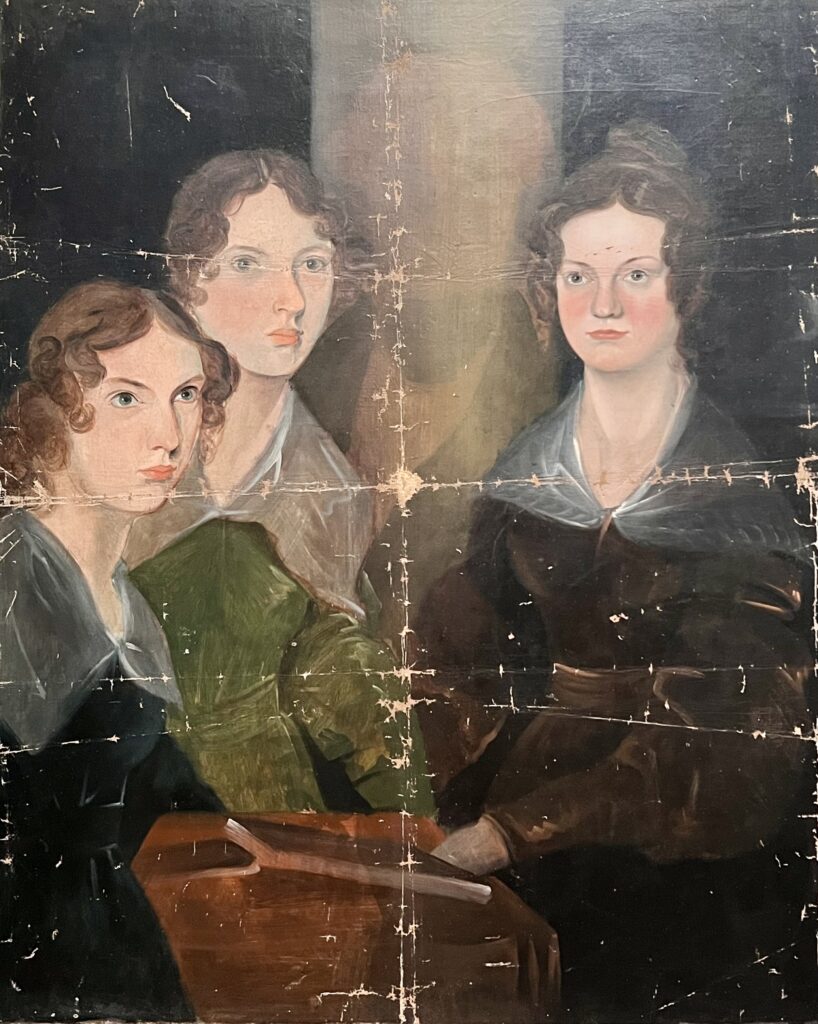
12. The Brontë Sisters by Branwell Brontë
Painted by their brother Branwell, this portrait features the three famous Brontë sisters — Charlotte, Emily, and Anne.
It’s the only surviving group portrait of the trio, made by their teen brother Branwell. They were among the greatest writers of the Victorian era and this is the definitive portrayal.
The portrait is known as the “Pillar Portrait” because it appears that Bramwell has painted himself out and instead added a pillar.
It was found in the possession of Charlotte’s widower, Arthur. It’s not in good condition because it was folded up in a drawer.
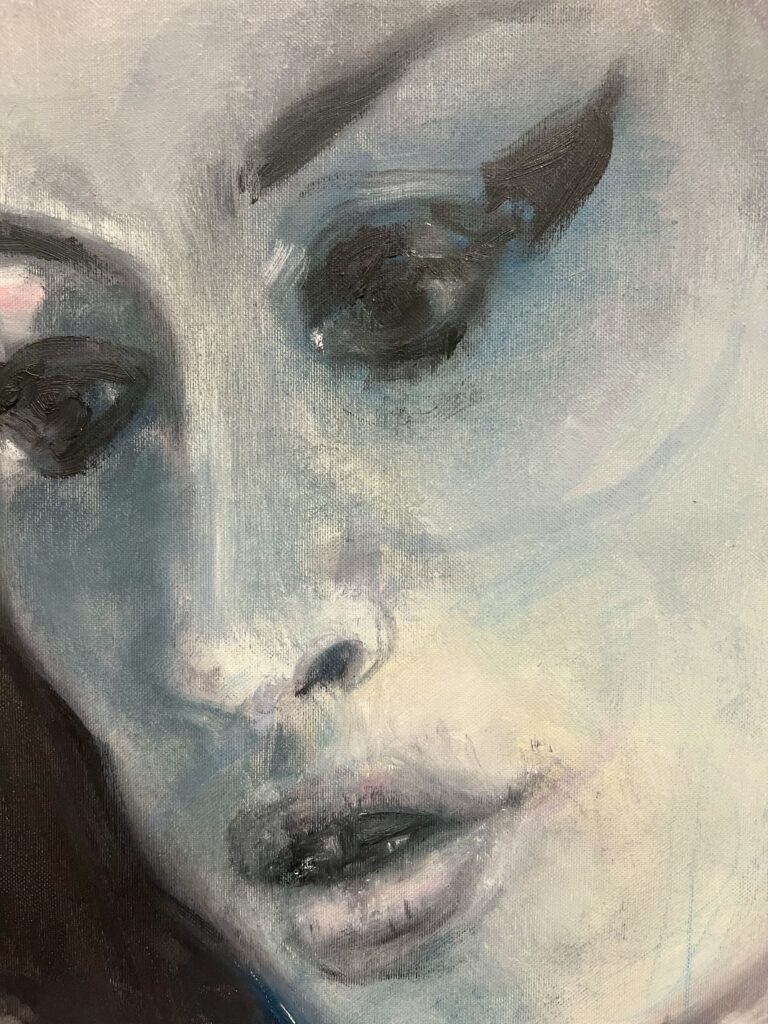
13. Portrait of Amy Winehouse
This contemporary portrait of the iconic singer is a poignant representation of her legacy.
Unlike many of the museum’s portraits, this portrait wasn’t painted from life. It was made in commemoration following Winehouse’s death at just age 27.
The artist, Dumas, scoured the internet for images of Winehouse. She included her dramatic sweep of eyeliner, but not her recognizable beehive hair style.
The translucent blue colors refer to the singer’s troubled life and her musical influences.
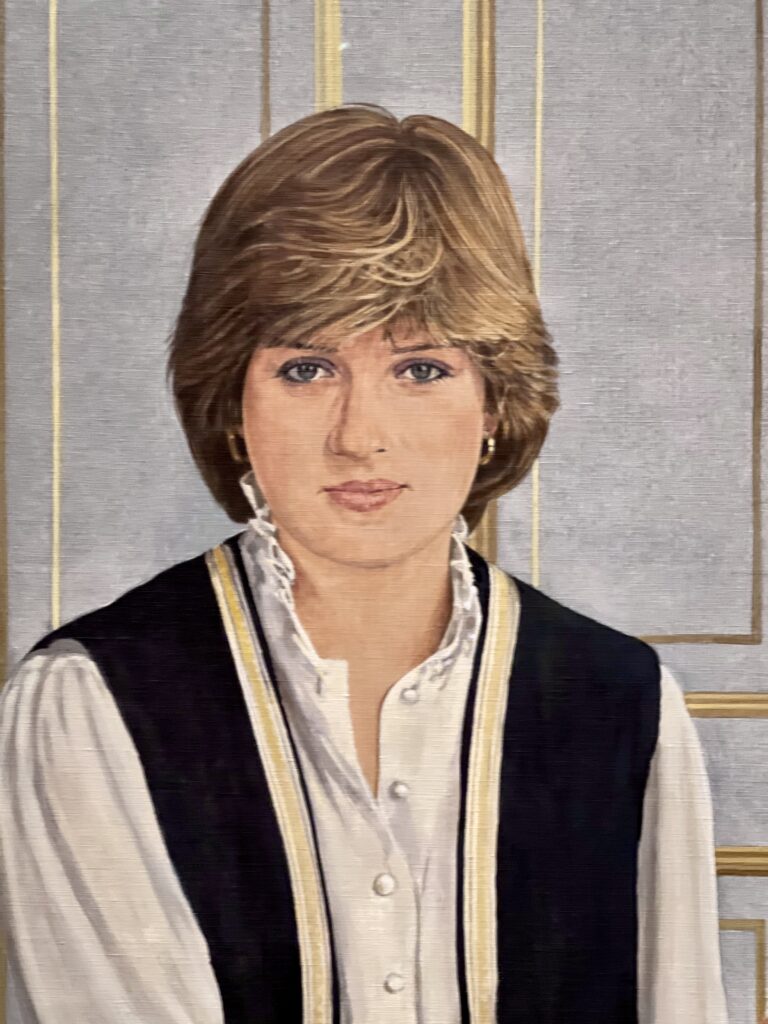
14. Princess Diana
The late Princess Diana pioneered a refreshingly modern image for the royal family. She was enormously popular in her life and still is, renowned for her charity work.
This portrait was commissioned to mark her engagement to the King Charles III, then the Prince of Wales, in 1981. The couple had two sons, divorced, and Diana was killed in a car crash at just 36.
Diana is shown in the Yellow Drawing Room of Buckingham Palace. She wore trousers, a radical choice for a royal portrait.
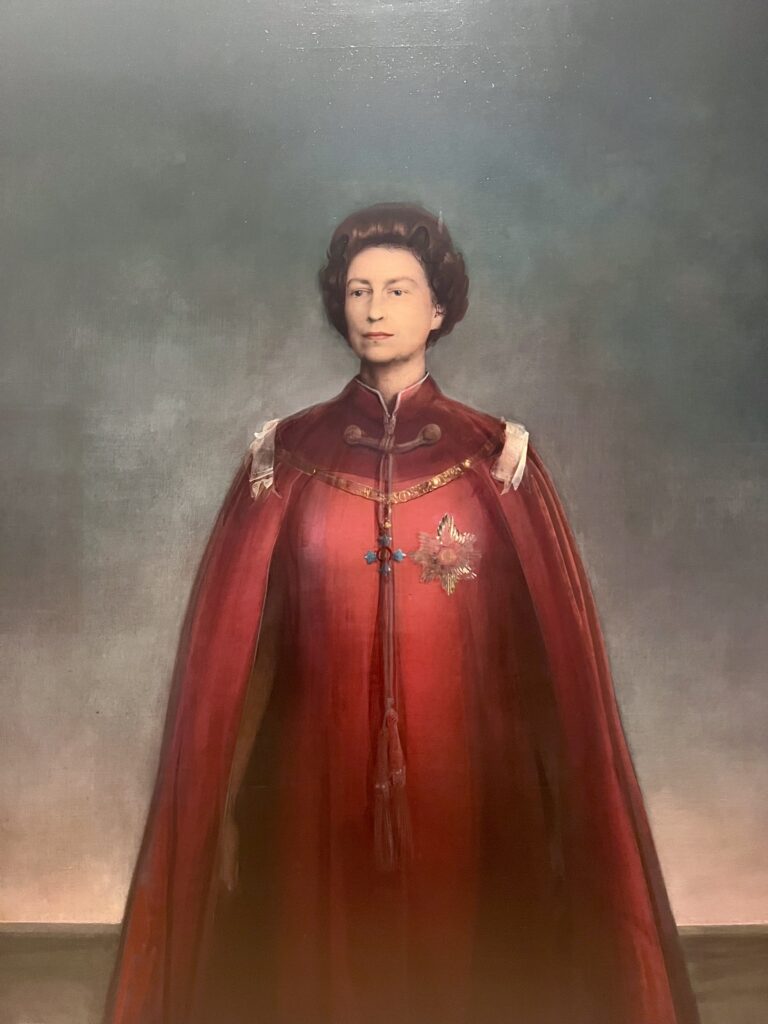
15. Elizabeth II
Queen Elizabeth was the longest reigning monarch in English history, ascending to the throne at just age 25.
Her reign spanned 70 years of huge social and cultural change. Upon her death at age 96, people queued for days to attend her lying-in-state.
In this monumental portrait, the artists chose a stark composition.
He sought to portray her as a stern monarch “alone in the problems of her responsibility,” not as a film star. Her eyes look hooded and almost unfathomable.
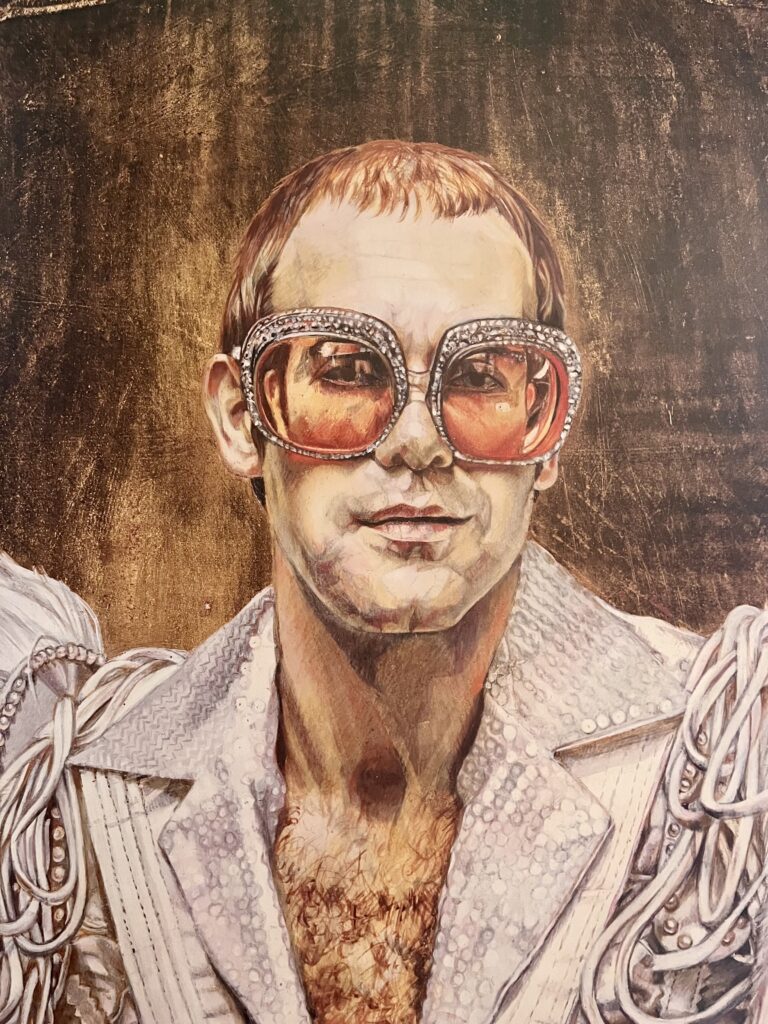
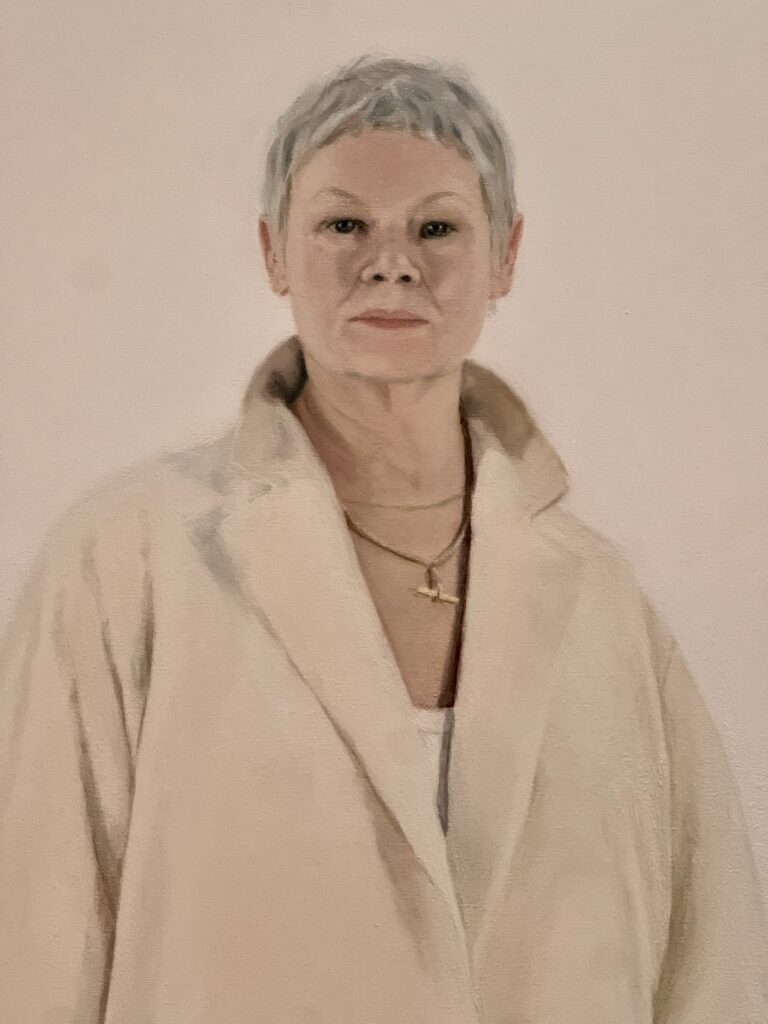
16. Celebrities
The museum has a large collection of portraits of musicians, actors, actresses, models, and sports figures.
You’ll see Elton John, Judy Dench, Naomi Campbell, Adele, David Bowie, Cate Blanchett, Paul McCartney, and more.
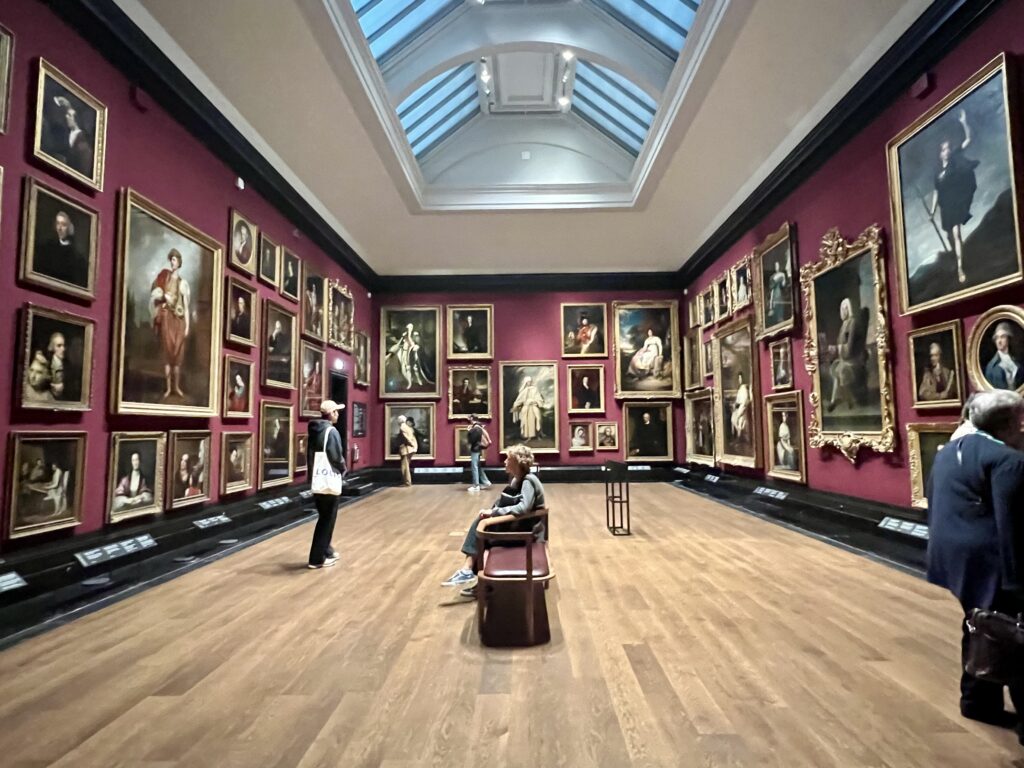
Practical Guide & Tips For The National Portrait Gallery
Address: The address is St. Martin’s Pl, London. But the new main entrance is on Ross Place.
Hours: Sunday through Thursday open from 10:30 am to 6:00 pm. Friday and Saturday open until 9:00 pm.
Tickets: Admission is free. You can also book a guided tour of the NPG, Tate Modern, and the National Gallery.
Tours: the museum offers a free 45 minute highlights tour at 11:00 am and 3:00 pm daily. It meets in Room 18. There is also a “portrait of the day” tour that last 30 minutes, leaving from the ground floor.
Museum Shop: The museum has an excellent shop. It’s a great source for medieval and Tudor history especially. You’ll find hard-to-track-down biographies.
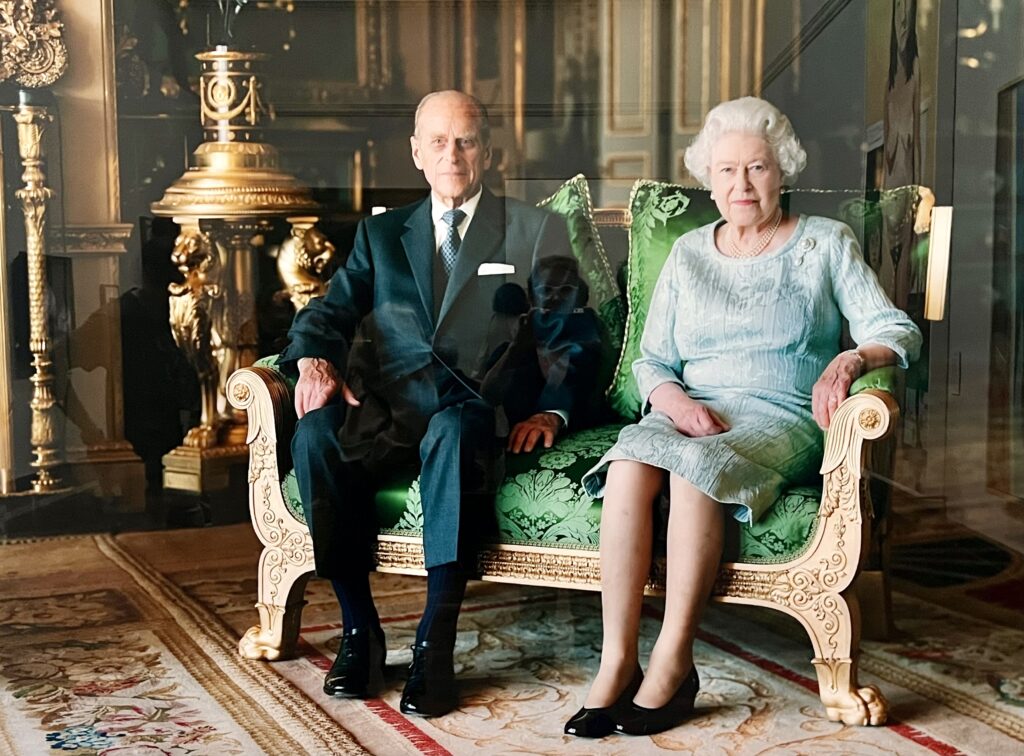
Cafe: The renovations included a new rooftop restaurant, the Portrait Restaurant. It offers terrific views of the London skyline.
Is The National Portrait Gallery Worth Visiting?
100% yes, especially for history buffs. It houses a remarkable collection of portraits that span centuries and provide a unique perspective on the history, culture, and personalities of the United Kingdom.
Pro Tips: The portraits are well labeled with good descriptions. But you can scan a QR code to get even more information.
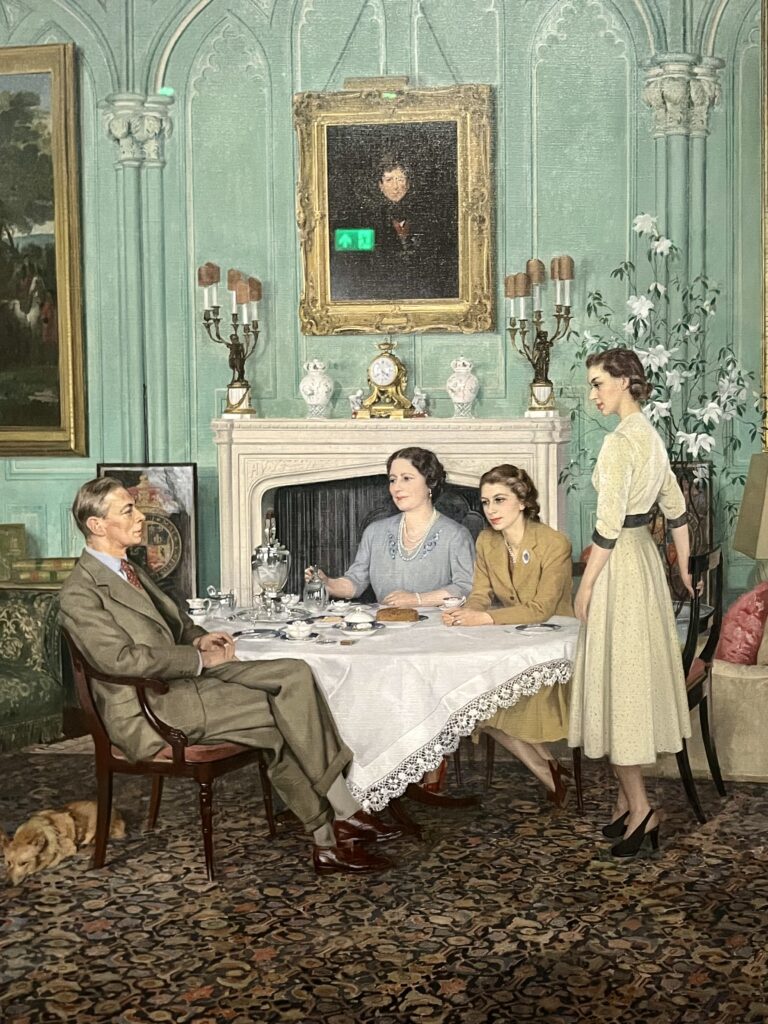
I hope you’ve enjoyed my guide to the National Portrait Gallery in London. Your may enjoy these other London travel guides and resources:
- 3 Day Itinerary for London
- 5 Day Itinerary for London
- Hidden Gems in London
- Tourist Traps To Avoid in London
- Best Museums in London
- Day Trips from London
- Harry Potter Places in London
- Guide to the Tower of London
- Guide to Westminster Abbey
- Guide to the Churchill War Rooms
- Guide To the National Gallery of Art
If you’d like to visit the National Portrait Gallery, pin it for later.

